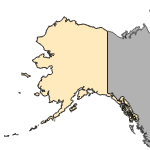Macrobrachium nipponense
(East Asian river prawn)
Crustaceans-Shrimp
Exotic |
|
Common name: East Asian river prawn
Synonyms and Other Names: Oriental river prawn
Taxonomy: available through
www.itis.gov
Identification: Macrobrachium nipponense, like most members of the genus Macrobrachium (Crustacea, Caridea, Palaemonidae), possesses a well developed, elongated second pair of pereiopods. Macrobrachium nipponense range from being nearly transparent to greenish or reddish brown in coloration (Zheng et al. 2019). Diagnostic features that support the identification of M. nipponense include the presence of a rostrum that reaches to, or slightly beyond, the distal end of the flattened plate on the second joint of the antennae (scaphocerite). Dorsal teeth (9-13) are present on the rostrum, and subequally spaced. The first pair of walking limbs (pereiopods) contain hinged, pincer-like claws (chela) that are half the length of the carpus. The second pair of pereiopods are elongated, and structurally identical to each other, unlike those of other Macrobrachium species. The length of the second pereiopod is 1.1-1.3 times as long as the total length of the body in males, and 0.6-0.7 in females. Short, dense hairs (setae) cover the cutting margin and much of the surrounding structure on the claws of M. nipponense (Cai and Ng 2002). Detailed diagnostics and taxonomic keys of morphological features needed for further identification of M. nipponense are given in (Kusamura and Suzuki 1997; Cai and Ng 2002; Zheng et al. 2019; Afanasyev 2020). Additionally, Zheng et al. (2019) provides a table of morphological traits and ratios relative to M. nipponense, and its congeners.
Size: Holthuis (1980) documented the maximum total length (measured from the tip of the rostrum to the posterior margin of the telson) to be 86 mm for males, and 75 mm for females.
Native Range: Macrobrachium nipponense is broadly distributed throughout southeast Asia, and is abundant in China, Japan, Korea, Vietnam, Taiwan, and Myanmar (Kusamura and Suzuki 1997; Cai and Dai 1999; Chen et al. 2017; Zheng et al. 2019). Introduced in Singapore, the Philippines, Uzbekistan, and southern Iraq (Grave and Ghane 2006).



|

Alaska |

Hawaii |

Puerto Rico &
Virgin Islands |

Guam Saipan |
Hydrologic Unit Codes (HUCs) Explained
Interactive maps: Point Distribution Maps
Nonindigenous Occurrences:
Table 1. States with nonindigenous occurrences, the earliest and latest observations in each state, and the tally and names of HUCs with observations†. Names and dates are hyperlinked to their relevant specimen records. The list of references for all nonindigenous occurrences of Macrobrachium nipponense are found here.
Table last updated 11/26/2024
† Populations may not be currently present.
Ecology: Macrobrachium nipponense is known to exhibit a high degree of environmental adaptability (Chen et al. 2009) and can migrate between fresh and brackish water (amphidromous). Unlike many Macrobrachium species, M. nipponense does not require brackish water to reproduce (Cai and Ng 2002; Chen et al. 2009). This allows M. nipponense to thrive in a variety of inland waterbodies, such as lakes, rivers, reservoirs, and mountain streams, as well as estuarine and intercoastal regions (Cai and Dai 1999; Cai and Ng 2002; Chen et al. 2009; Zheng et al. 2019). The high environmental adaptability of M. nipponense helps to facilitate its culture in artificial systems, and as a result, it has become an important aquaculture species in Vietnam, Japan and China (Grave and Ghane 2006). Macrobrachium nipponense are omnivorous, feeding on a wide variety of organisms including algae, aquatic plants and insects, fish, crustaceans, and large quantities of organic detritus (Lavajoo et al. 2019). Stable isotope analysis conducted by Xu (2008), indicated that M. nipponense feeds primarily on the benthos, and plays an important role in trophic linkages as both consumer and prey.
Means of Introduction: While the exact vector is uncertain, the number of sightings found in close proximity of shipping ports has led biologists to hypothesize that introductions of M. Nipponense within the U.S. originated from ballast water discharges (Smith, S., North Carolina Division of Marine Fisheries, personal communication; Kingsley-Smith, P., South Carolina Department of Natural Resources, personal communication).
Status: The status of M. nipponense within Florida and South Carolina is unknown. In North Carolina, specimens have been collected each year between 2014-2019, which suggests that they are established in the White Oak River Basin.
Impact of Introduction: The impacts of M. nipponense are currently unknown, as no studies have been conducted to determine how this species has affected ecosystems in the invaded range. The absence of data does not equate to a lack of impacts, but rather suggests that research is required to evaluate impacts before conclusions as to the injurious nature of this species can be made.
References: (click for full references)
Afanasyev, D.F., L.A. Zhivoglyadova, N.A. Nebesikhina, M.A. Magomedov, Y.K. Mutallieva, B.D. Velibekova, and A.V. Mirzoyan. 2020. Finding of Oriental River Prawn
Macrobrachium nipponense (De Haan, 1849) in the Lower Terek River (Caspian Sea Basin). Russian Journal of Biological Invasions 11(3):191-197.
Cai, Y., and A.Y. Dai.1999. Freshwater shrimps (Crustacea: Decapoda: Caridea) from the Xishuangbanna region of Yunnan Province, southern China. Hydrobiologia 400:211-241.
Cai, Y., and P.K. Ng. 2002. The freshwater palaemonid prawns (Crustacea: Decapoda: Caridea) of Myanmar. Hydrobiologia 487(1):59-83.
Chen, R.T., C.F. Tsai, and W.N. Tzeng. 2009. Freshwater prawns (Macrobrachium) of Taiwan with special references to their biogeographical origins and dispersion routes. Journal of Crustacean Biology 29(2):232-244.
Chen, P.C., C.H. Shih, T.J. Chu, Y.C Lee, and T.D. Tzeng. 2017. Phylogeography and genetic structure of the oriental river prawn Macrobrachium nipponense (Crustacea: Decapoda: Palaemonidae) in East Asia. PloS ONE 12(3)e0173490.
De Grave, S. and A. Ghane. 2006. The establishment of the oriental river prawn, Macrobrachium nipponense (de Haan, 1849) in Anzali Lagoon, Iran. Aquatic Invasions 1(4):204-208.
Holthuis, L.B. 1980. Shrimps and prawns of the world. An annotated catalogue of species of interest to fisheries, FAO species catalogue. FAO Fisheries Synopsis 125:1-271.
Klotz, W. 2008. Macrobrachium agwi—a new species of freshwater prawn (Decapoda: Palaemonidae) from East Bengal, India. Zootaxa 1844(1):47-54.
Kusamura, T., and H. Suzuki. 1997. Reexamination of the diagnostic characters of two freshwater palaemonid prawns, Macrobrachium nipponense (De Haan, 1849) and M. formosense Bate, 1868 (Decapoda, Caridea) from Japan. Crustaceana 70(7):831-839.
Lavajoo, F., N. Amrollahi Biuki, A. A. Khanipour, A. Mirzajani, J. Gutiérrez Fruits, and A. Akbarzadeh. 2019. Natural diet of Macrobrachium nipponense shrimp from three habitats in Anzali Wetland, Iran. Caspian Journal of Environmental Sciences 17(2):101-111.
Xu, J., M. Zhang, and P. Xie. 2008. Stable isotope changes in freshwater shrimps (Exopalaemon modestus and Macrobrachium nipponensis): trophic pattern implications. Hydrobiologia 605(1):45-54.
Zheng, X.Z., W.J. Chen, and Z.L. Guo. 2019. The genus Macrobrachium (Crustacea, Caridea, Palaemonidae) with the description of a new species from the Zaomu Mountain Forest Park, Guangdong Province, China. ZooKeys 866:65.
Author:
Procopio, J., and Daniel, W.M.
Revision Date: 4/16/2021
Citation Information:
Procopio, J., and Daniel, W.M., 2024, Macrobrachium nipponense (De Haan, 1849): U.S. Geological Survey, Nonindigenous Aquatic Species Database, Gainesville, FL, https://nas.er.usgs.gov/queries/FactSheet.aspx?speciesID=3596, Revision Date: 4/16/2021, Access Date: 11/27/2024
This information is preliminary or provisional and is subject to revision. It is being provided to meet the need for timely best science. The information has not received final approval by the U.S. Geological Survey (USGS) and is provided on the condition that neither the USGS nor the U.S. Government shall be held liable for any damages resulting from the authorized or unauthorized use of the information.